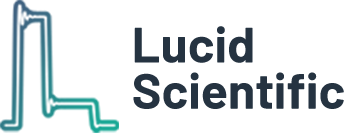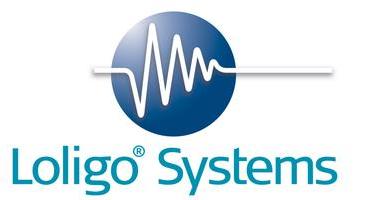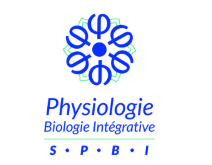 Lucid Scientific, Inc
Lucid Scientific, Inc

Lucid Scientific, a pioneer in life science instrumentation, introduces Resipher, a groundbreaking solution empowering researchers to precisely measure oxygen consumption directly in standard microplates. Resipher features patented dynamic optical oxygen sensors, offering unparalleled sensitivity while ensuring minimal cell disturbance. Its super-compact profile seamlessly integrates into any incubator or workstation, enhancing workflow efficiency.
With Resipher, scientists gain access to Lucid Lab, a cutting-edge web-based software for real-time logging and analysis. This intuitive platform facilitates fast and comprehensive data visualization for each of the monitored wells. Researchers can now observe their cellular experiments in real-time from any computer or remotely via smartphone or tablet, revolutionizing the way biological research is conducted. Lucid Scientific's innovative approach is driving forward the frontier of drug discovery and fundamental biological research, empowering scientists worldwide to unlock new insights and accelerate breakthroughs.
 Loligo
Loligo

Loligo® Systems develops research equipment for aquatic biology. Our products allow scientists all over the world to excel in the fields of swimming performance, respirometry, blood physiology and behavior analysis in a diversity of marine and freshwater organisms. We offer customized solutions as well as free scientific advice and support.
Proudly sponsoring the EcoMito Symposium
 Pyroscience
Pyroscience

PyroScience offers cutting-edge opto-chemical sensor solutions based on compact stand- alone (FireSting-GO2), PC-operated lab (FireSting-O2/-PRO) or underwater fiber-optic devices (AquapHOx loggers & transmitters). They work with a great variety of optical oxygen, pH and temperature sensors for application in gas, water and aqueous & semi-solid samples. The great variety of optical sensor heads include microsensors, miniprobes, and diverse smart contactless sensors for different oxygen and pH ranges. Pre-sterilised and pre-calibrated sensors are ideal for measurements in cultivation approaches, whereas fast-responding fiber- based probes, as well as flow cells and sensor spots with contactless read-out are well approved for respiration and photosynthesis rates determination. Now we also offer a 96- channel reader FirePlate-O2, e.g. for 96-well plates with integrated oxygen sensors, for application in small-scale cell cultivation and respiration rate measurements. Find the best sensor solution for your application in experimental biology.
PyroScience GmbH
Kackertstr. 11
52072 Aachen
GERMANY
49 (0)241 5183 2210
https://www.pyroscience.com/en/
Proudly Sponsoring the EcoMito Symposium
Société de Physiologie et Biologie Intégrative

A little history...
In May 1848, two surgeons, Follin and Houel, and a naturalist, Charles Robin, had the idea of organizing periodic meetings in Paris of physicists, chemists, naturalists, doctors and physiologists interested in the phenomena of life. Among the founding members was also Claude Bernard, appointed the previous year as a substitute for his teacher Magendie, then holder of the chair of experimental physiology at the Collège de France. The first president of the Biological Society was Pierre Rayer, Napoleon III's physician, who two years later demonstrated the mechanism of transmission of glanders from horses to humans and discovered the anthrax bacterium with Davaine the same year; He would later prove to be an excellent specialist in kidney biology and pathology. Jean-Marie Charcot was one of his most brilliant students in his department at the Salpêtrière. Pierre Rayer had been expelled from the Faculty of Medicine for having married a Protestant. But Napoleon III later created a chair of comparative pathology for him. Elected dean, Rayer in turn created a chair of histology for Charles Robin.
The meetings of the Society are held every Saturday at 3 p.m., in the premises of the Faculty of Medicine. According to its statutes, the Society comprises 40 titular members, 20 associate members, 80 corresponding members and finally 15 honorary members appointed by the Bureau. But it is planned that the number of these members may increase by passing the full members to the honorary level after 9 years. This passage, initially optional, was then made compulsory, in order for the founders to ensure a regular renewal of the titular members and to allow the young people to have an enriching contact with the elders.
One striking element in the statutes of the Biological Society is the very liberal nature of the regulations: anyone, known or unknown, can present a work during the sessions, which are moreover compulsory for full members. A written text, submitted during the presentation, is published the following Friday for discussion at the Saturday session. The publication constituting the Weekly Proceedings of the Biological Society became, but much later, monthly, then quarterly. From 1864, Charles Robin, founder of the Biology Society, published the Journal of Anatomy and Physiology, a periodical that ceased publication after 1920.
Among the successive presidents of the Biological Society, the majority of physiologists were Claude Bernard, Paul Bert, C. Brown-Séquard, J.B. Chauveau, J.E. Marey, A. Dastre, Charles Richet, D'Arsonval, L. Lapicque, P. Portier. Among the members were M. Berthelot, E. Achard, A.-V. Cornil, Mathias-Duval, A. Laveran
The Society wanted to remain Parisian and not travel to the provinces, but it had its correspondents, French and foreign, whose number increased from year to year: Pflüger, Cajal, Waller, Golgi, Mosso, E. De Cyon, Kroneker. These links gradually gave rise to the Company's subsidiaries, in France, Belgium, but also in Argentina, Poland and Czechoslovakia, under the impetus of foreign colleagues who had worked for a time in France. Thus, scientific decentralization is achieved, not by moving the center, but by creating new centers.
Presidents of the Society of Biology
Oroboros Instruments

Founded in 1992 by Dr. Erich Gnaiger, Oroboros Instruments boasts years of experience in mitochondrial physiology, making us, the team, the experts in mitochondria and cell research. Labs, research centers, hospitals, pharmaceutical and biotech companies are benefiting from our gold standard Oroboros technology for high-resolution respirometry (HRR). The Oroboros Network includes reference laboratories worldwide.
Our international team of experts has the skills, knowledge, and creativity to bring innovation and excellence to high-resolution respirometry. By actively participating in research along with hosting international researchers in the specialized Oroboros Laboratories, our scientists understand what is required for excellence in research. They develop tested and trusted instruments and protocols that enable researchers and clinicians to study mitochondrial function in cancer, diabetes, aging, neurodegeneration, exercise physiology and mitochondrial medicine.
